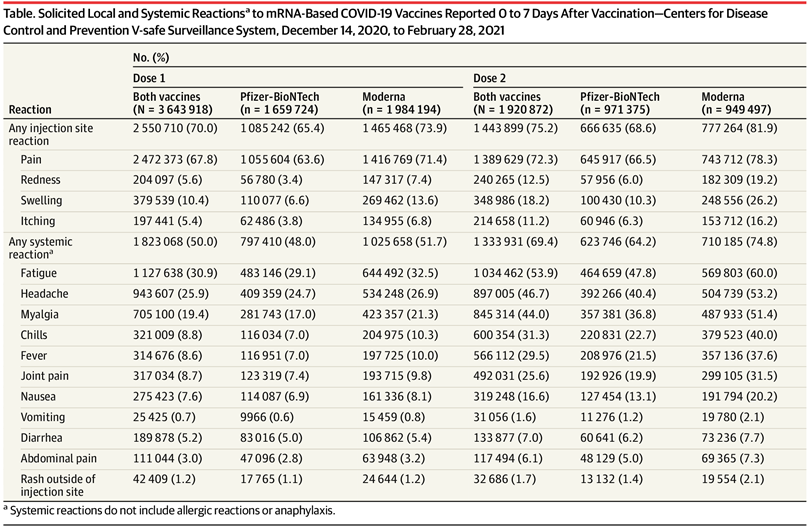This table shows top adverse reactions reported to the first two vaccines authorized in the US. Hundreds of social media groups on Facebook, reddit and WhatsApp are also flooded by descriptions of adverse reactions and immunity related events. What is missing? The ability to systematically analyze all these reactions in different health and neighborhood communities.
We started such a study in one neighborhood community and would like to also conduct it in the MEBO/PATM communities. We are also opening it to MEBO friends and family - asking them to indicate their relationship with MEBO/PATM in the comment section of the survey.
We are also collecting COVID-19 experiences in different groups of people, analyzing infectious disease susceptibility risks.
in English: https://bit.ly/BTN-eng
Thank you for your help!
REFERENCES
ClinicalTrials.gov [Internet]. Bethesda (MD): National Library of Medicine (US). 2021 April 6 - . Identifier NCT04832932, The COVID-19 Back-to-Normal Study [cited 2021 April 7]; Available from: https://clinicaltrials.gov/ct2/show/NCT04832932
Chapin-Bardales J, Gee J, Myers T. Reactogenicity Following Receipt of mRNA-Based COVID-19 Vaccines. JAMA. 2021 Apr 5. doi: 10.1001/jama.2021.5374. Epub ahead of print. PMID: 33818592.
Zimmermann P, Curtis N. Factors that influence the immune response to vaccination. Clinical microbiology reviews. 2019 Mar 20;32(2).
Mosquera MJ, Kim S, Zhou H, Jing TT, Luna M, Guss JD, Reddy P, Lai K, Leifer CA, Brito IL, Hernandez CJ. Immunomodulatory nanogels overcome restricted immunity in a murine model of gut microbiome–mediated metabolic syndrome. Science advances. 2019 Mar 1;5(3):eaav9788.
Bandaru P, Rajkumar H, Nappanveettil G. The impact of obesity on immune response to infection and vaccine: an insight into plausible mechanisms. Endocrinol Metab Synd. 2013;2(2):1000113-22.
Kim YH, Kim JK, Kim DJ, Nam JH, Shim SM, Choi YK, Lee CH, Poo H. Diet-induced obesity dramatically reduces the efficacy of a 2009 pandemic H1N1 vaccine in a mouse model. Journal of Infectious Diseases. 2012 Jan 15;205(2):244-51.
Monteiro MP. Obesity vaccines. Hum Vaccin Immunother. 2014;10(4):887-95. doi: 10.4161/hv.27537. Epub 2013 Dec 23. PMID: 24365968; PMCID: PMC4896563.
Ozgen MH, Blume S. The continuing search for an addiction vaccine. Vaccine. 2019 Aug 23;37(36):5485-90.
Daniel W, Nivet M, Warner J, Podolsky DK. Early evidence of the effect of SARS-CoV-2 vaccine at one medical center. New England Journal of Medicine. 2021 Mar 23.


